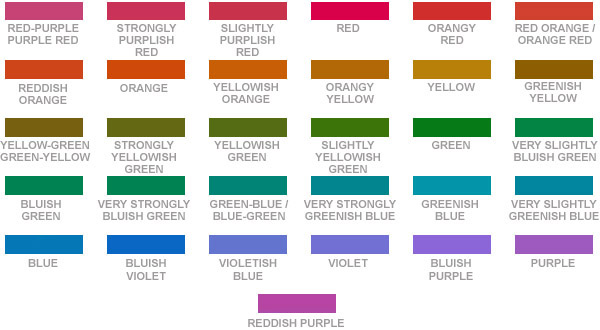G.I.A. COLOR GRADINGGemstone color grading is broken into three quantifiable categories: intensity (saturation), hue (color), and tone (lightness/darkness). The GIA specifies and labels up to thirty one gemstone hues. The "hue" is the actual "color" of the material (blue, geen, red, etc.). Gemstone Hue Chart The GIA nomenclature also specifies six levels of saturation ranging from "grayish" (neutral grey) to "moderately strong" to "vivid." The term "intensity" is also used to describe a stone's saturation. Gemstone Saturation Chart To describe the darkness or lightness of a colored stone, the GIA system has nine levels of tone ranging from "very very light" to "very very dark." A numerical value is assigned to each label for use in a grading report. Gemstone Tone Chart With the exception of hue, each of these parameters by themselves are relatively meaningless and they must be used in conjunction to tell the full story of a gem's color quality. Taken together, these three parameters will provide a simple numeric code that can quickly and accurately quantify gemstone color.  Using a Kashmir or Cornflower blue sapphire as an example, in order to receive a 10 quality rating, the stone would posses a "violetish/blue" hue, with a 6 or "medium dark" tone and 6 or "vivid" saturation. Gemstone color grading is broken into three quantifiable categories: intensity (saturation), hue (color), and tone (lightness/darkness). The GIA specifies and labels up to thirty one gemstone hues. The "hue" is the actual "color" of the material (blue, geen, red, etc.). Gemstone Hue Chart |
or call us: (April 1st - September 26th) 570-925-4419
(October 1st - March 27th) 828-837-6860
cell phone - 570-912-8407